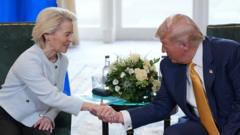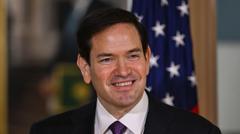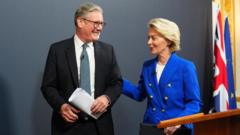After years of research, scientists have presented a new measurement of the muon's wobble, highlighting potential new physics but remaining uncertain about its implications.
Unraveling the Mysteries of the Muon's Wobble: Insights and Implications

Unraveling the Mysteries of the Muon's Wobble: Insights and Implications
Physicists reveal the latest findings on the muon's behavior, which could unlock new understandings of the universe.
The Muon g-2 experiment at Fermilab has made significant strides over the last 12 years in understanding a particle known as the muon, which behaves intriguingly in a magnetic field. Researchers have now published their most precise measurement of the muon’s wobble, a behavior that offers potential insights into the fundamental forces and materials that shape our universe. Peter Winter, a physicist involved in the project, emphasized the importance of this benchmark, suggesting it might lead to discovering novel types of matter and energy.
Despite the promising results, there remains a critical dilemma: two different theoretical predictions for the muon’s behavior exist, and the latest findings support only one of them. Until it is clear which theory is accurate, experts warn against jumping to conclusions about new physics. Aida El-Khadra, a physicist from the University of Illinois, highlighted the need for continued theoretical scrutiny to clarify the implications of the experiment.
Muons, which are heavier and less stable relatives of electrons, exhibit a characteristic motion when subjected to magnetic fields. This precession is tied to their intrinsic magnetic properties, known as 'g'. Understanding the muon’s wobble could unlock deeper mysteries about how the universe was formed and continues to function. Scientists from the Muon g-2 Collaboration are calling for further investigation to resolve the current uncertainties, leaving us on the edge of significant scientific advancement.
Despite the promising results, there remains a critical dilemma: two different theoretical predictions for the muon’s behavior exist, and the latest findings support only one of them. Until it is clear which theory is accurate, experts warn against jumping to conclusions about new physics. Aida El-Khadra, a physicist from the University of Illinois, highlighted the need for continued theoretical scrutiny to clarify the implications of the experiment.
Muons, which are heavier and less stable relatives of electrons, exhibit a characteristic motion when subjected to magnetic fields. This precession is tied to their intrinsic magnetic properties, known as 'g'. Understanding the muon’s wobble could unlock deeper mysteries about how the universe was formed and continues to function. Scientists from the Muon g-2 Collaboration are calling for further investigation to resolve the current uncertainties, leaving us on the edge of significant scientific advancement.





















